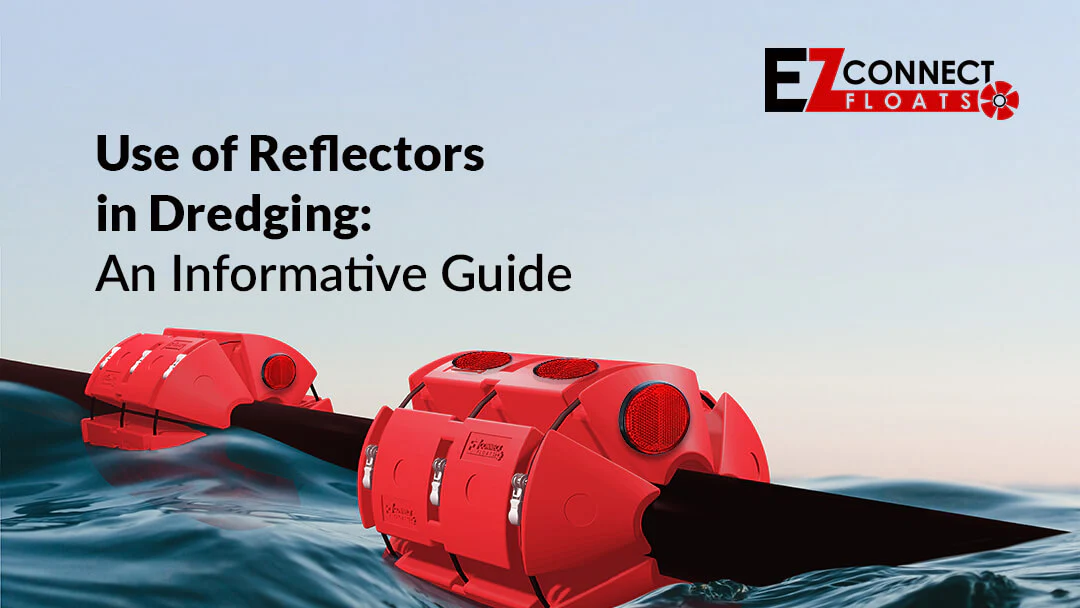
Unlocking Efficiency – The Use of Reflectors in Dredging
With the increase of globalization, the importance of logistics has grown like never before. Ocean shipping plays the biggest role in the global logistics chain contributing 80% of the total logistics. Therefore, it is imperative to ensure that ocean movements remain easy, economical, and safe.
Dredging is an essential activity in seaports. It plays a crucial part in the maintenance of navigable waterways, the facilitation of safe harbor access, and the support of coastal development initiatives. However, safety always comes first, and that’s especially true when working in low light or bad weather. To improve visibility, increase safety, and maximize dredging efficiency, reflectors, a basic yet effective technology, have emerged as indispensable instruments.
This blog post will walk you through the basics of reflectors, their usage in dredging, and the use of reflectors in dredging.
Eager to know more about reflectors? Check our website.
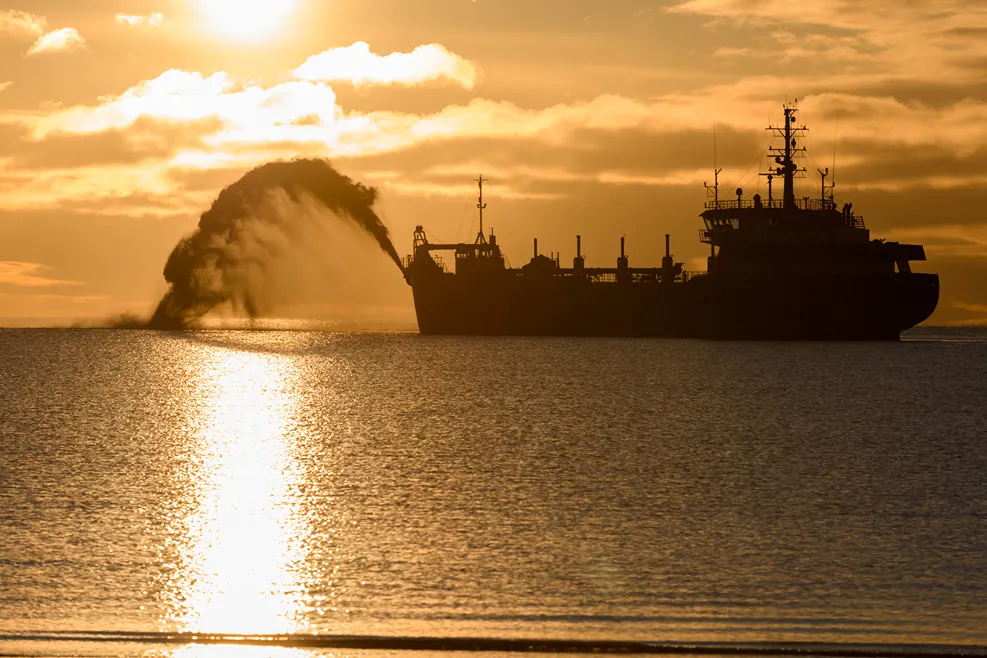
- Benefits of using reflectors in dredging:
- What are the different types of reflectors used in dredging operations?
- What are the uses of reflectors in dredging operations?
- Why should you use EZ Connect Floats reflectors in dredging operations?
- Key takeaways
- Frequently asked questions about the use of reflectors in dredging
- Benefits of using reflectors in dredging:
- What are the different types of reflectors used in dredging operations?
- What are the uses of reflectors in dredging operations?
- Why should you use EZ Connect Floats reflectors in dredging operations?
- Key takeaways
- Frequently asked questions about the use of reflectors in dredging
Benefits of using reflectors in dredging:
With the increasing awareness about safety, the use of reflectors in dredging and maritime industries has greatly increased. Here are some major benefits of using reflectors in dredging works.
- Enhanced visibility and safety: Reflectors are often used to make dredging machinery, pipelines, and working gears more visible and safer. Workers can quickly identify the machines and hazards, which improves coordination, and makes the workplace safer for everyone. Moreover, the risk of collisions between vessels is reduced as the reflectors fitted to dredging vessels and equipment work as warning signals.
- Marking dredging equipment and pipelines: Reflectors in dredging are often used to mark equipment, pipelines, risky areas, etc. Companies often use reflectors in underwater visibility for dredging as they improve the visibility of underwater pipelines and equipment, which helps reduce the risk of damage. Reflectors can be strategically placed to mark the location of submerged dredging equipment and pipelines, ensuring their visibility and preventing accidental interference.
- Streamlining navigation & dredge operation: Other applications of reflectors in dredging are in navigation. Reflectors placed on buoys and markers help vessels navigate dredged channels more effectively, reducing the risk of grounding. They guide vessels along safe routes, improving overall navigation efficiency.
- Essential for regulations and guidelines: According to SOLAS (International Convention for the Safety of Life at Sea), vessels are required to be equipped with proper lighting and signaling devices, including reflectors. Reflectors contribute to compliance with SOLAS regulations, enhancing vessel visibility and safety. The U.S. Coast Guard also enforces regulations regarding the use of reflectors in marine operations. Compliance with these regulations ensures the safety of dredging operations in U.S. waters.
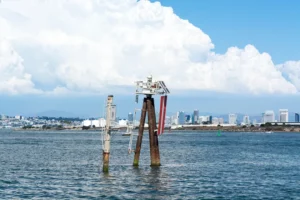
What are the different types of reflectors used in dredging operations?
Dredging is a critical operation that is performed in harsh weather conditions. Various reflectors are used in this process, and different reflectors have different purposes.
- Active reflectors: An active reflector is an optical device that emits light using light-emitting components. Marker buoys, beacons, and other navigational aids rely heavily on these devices. Because of this, the dredge operator can locate the exact location of the reflectors with higher precision.
- Passive reflectors: Passive reflectors use retroreflective materials to return incoming light to its original direction of travel. The are used frequently in vessel safety signs, identifying hazardous areas, and other maritime industry works.
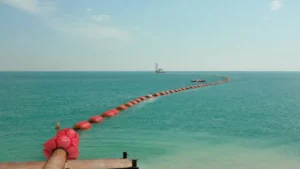
What are the uses of reflectors in dredging operations?
- Efficient operations: Reflectors help operators monitor dredging activities more easily, enabling them to allocate resources more efficiently. Real-time visibility of equipment and pipelines allows for proactive maintenance, minimizing downtime.
- Facilitating dredging monitoring through optical positioning system: Reflectors can be integrated with monitoring systems, such as radar or GPS, to provide real-time tracking and positioning information. Advanced optical positioning systems use prism reflectors for more accuracy. This facilitates accurate monitoring of dredging operations, ensuring compliance with project plans and environmental regulations.
- Efficient harbor operation: Reflectors placed on breakwaters and harbor entrance structures enhance their visibility, improving safety during vessel ingress and egress. They enable safer and more efficient harbor operations.
- Zone marking: Reflectors help mark sensitive areas, such as coral reefs or protected habitats, during dredging operations. They ensure that dredging activities avoid these areas, minimizing ecological impact. Moreover, reflectors are also commonly used to demarcate no-entry zones or restricted areas Protecting Sensitive Areas.
Why should you use EZ Connect Floats reflectors in dredging operations?
EZ Connect Floats is one of the renowned reflective markers in dredging activities. Unlike standard reflectors, EZ connect models are made from high-quality materials, making them visible from great distances even in adverse weather conditions. These reflectors are built to last long and withstand harsh open-sea conditions, reducing costly maintenance and repairs.
Call EZ Connect Floats at (858) 859-2385 for any kind of reflector requirement for dredging operations. You can also connect with us for a free sales quote.
Key takeaways
The use of reflectors has significantly improved the safety of dredging operations. Besides safety, reflectors now have wider usage in efficient working and improved accuracy. With the further development of technology, the effectiveness of systems like reflective materials and GPS-enabled reflectors will increase.
Frequently asked questions about the use of reflectors in dredging
FAQ-1: Where are reflectors typically placed in dredging operations?
Following are some common locations for reflectors in dredging operations:
- Underwater extensions like pipes and cables need the placement of reflectors on the seafloor.
- Reflectors are often placed on buoys to mark the boundaries of dredging zones.
- Sometimes reflectors are installed directly on the dredge, particularly at the front and rear of the vessel.
FAQ-2: How can reflectors mark dredging boundaries?
Here are a few ways reflectors can be utilized:
- Reflective materials can be applied to buoys or installed as separate reflectors on buoy structures. These buoys are strategically placed along the dredging boundary to clearly demarcate the area.
- Floating reflectors can be attached to floating barriers or other structures deployed along the dredging boundary.
- In some cases, submerged reflectors can mark dredging boundaries underwater.
FAQ-3: What are the different reflective devices used in dredging equipment?
Various reflective devices can be used in dredging equipment to enhance visibility and improve safety.
- Reflective Tape: typically applied to the arms, pipes, or other prominent equipment parts.
- Reflective Panels: larger reflective surfaces that can be attached to the dredging equipment.
- Reflective Markings
- Reflective Buoyant Devices
- Light Emitting Diode (LED)
FAQ-4: How can reflectors enhance visibility in dredging operations?
Dredging operations often occur during early morning, late evening, or nighttime when lighting conditions may be poor. Reflectors, such as reflective Tape, panels, or markings, are designed to reflect light and make the dredging equipment more visible even in low-light situations. This helps other vessels, workers, or surveyors in the area to identify the equipment and its boundaries. Also, shipping companies use reflectors for improved navigation in dredging.
Have Questions?
Get in touch with us now!
Related Blogs
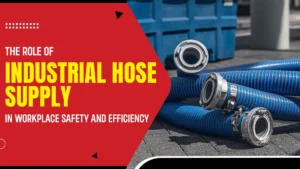
The Role of Industrial Hose Supply in Workplace Safety and Efficiency
In high-stakes industries such as oil and gas, mining, manufacturing, dredging, and defense, industrial hoses serve as vital connectors in daily operations. Whether transferring hazardous
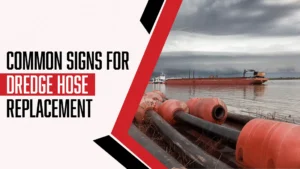
Common Signs For Dredge Hose Replacement
Dredge hose is an essential component in mining, oil and gas, and heavy industries, where it is used to transport materials such as sediment, slurry,

The Role of Automation and AI in Next-Generation Dredging Technology
Dredging technology has undergone a quiet but powerful transformation over the past decade. A purely mechanical process, which included heavy machinery, manual supervision, and reactive
